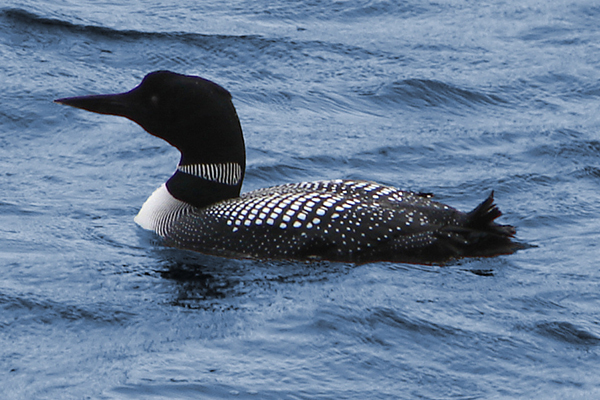Few birding experiences rival hearing the haunting call of the loon or seeing them glide by in protected coves on a lake. However, for the birds’ protection, Vermont Fish & Wildlife Department is asking boaters and anglers to enjoy loons from a safe distance this summer.
“Loons were removed from Vermont’s endangered species list in 2005, but one of the main threats they still face is human disturbance during the breeding season,” said Doug Morin, wildlife biologist with Vermont Fish & Wildlife Department.
“Although most areas where loons are nesting on Vermont’s lakes are surrounded by signs reminding people to give loons the space they need, not all nesting areas are marked. We’re asking people to view loons using binoculars rather than from up close, whether they are in a boat, canoe or a kayak.”
Morin also reminds people to avoid lead fishing tackle. Loons sometimes swallow stray fishing tackle and suffer the effects of lead poisoning. Lead sinkers weighing one-half ounce or less are illegal in Vermont, but larger tackle still has the capacity to slough off lead into the environment over time. Morin also recommends that anglers be careful to not attract loons to their bait and lures and, especially, don’t leave any fishing line behind as fishing tackle can kill loons.
Eric Hanson oversees the Loon Conservation Project for the Vermont Center for Ecostudies in partnership with the Vermont Fish & Wildlife Department. He and his colleagues monitor Vermont’s loon population and have even put out game cameras around loon nests to monitor the behavior of people around them. Hanson says that most people are respectful of nesting loons and give them space, but people sometimes inadvertently harm loons without meaning to.
“Loon chicks can be difficult to see, so we ask motor boaters to note where loon families are and to avoid those areas,” said Hanson. “We also ask that motor boaters obey ‘no wake’ laws within 200 feet of shorelines because boat wakes can flood and destroy shoreline loon nests.”
As Vermont’s loon population continues to increase and canoeing and kayaking continue to become more popular, there is greater potential for people to come into conflict with loons. Hanson reminds boaters to avoid pursuing loons in a canoe or kayak, especially loons with young.
“Occasionally a loon will be curious and approach people and if that happens just enjoy it,” said Hanson. “However, loons that are constantly swimming away from you are stressed and may abandon their young if they feel they are in danger.”
Hanson also urges shoreline property owners to maintain appropriate habitat for loons, including a forested area along shorelines where loons can nest.
Volunteers interested in monitoring loons for the Loon Conservation Project should contact Hanson at







